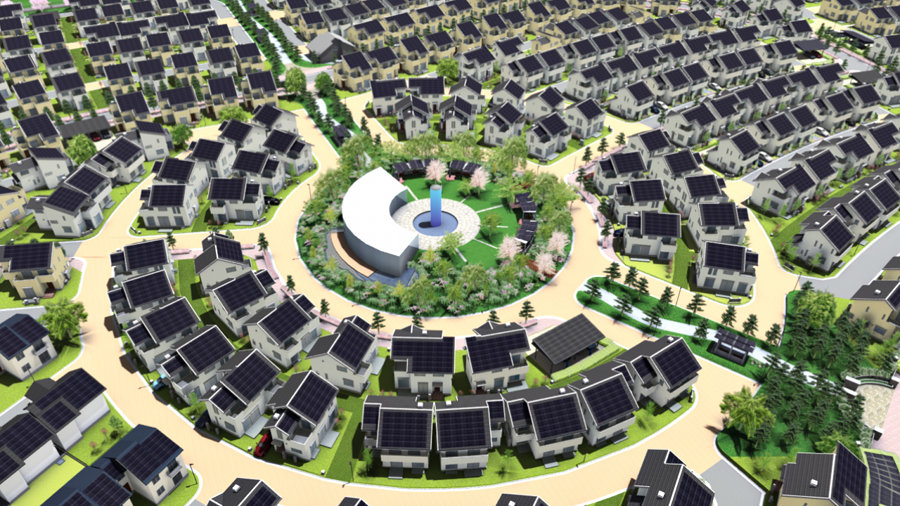November 19, 2011


Japan is known for being high tech, and thanks to companies such as Panasonic, its high tech is going green. Take a look at Panasonic’s eco innovations for the smart home of the future and the smart city the company plans to complete by 2013. (Illustration courtesy of Panasonic)
[nggallery id=54 template=carousel images=8]
[imagebrowser id=54]
Editor’s Note: This story is part of a series looking at Panasonic and its ecological strategies and technological developments.
By E.Q. Lam
Japan is known for being high tech, and thanks to companies such as Panasonic, its high tech is going green. Take a look at Panasonic’s eco innovations for appliances and electronics, both those currently on the market as well as those the company hopes to introduce in the near future. The company’s various divisions have public venues which showcase the products for complete energy solutions for the home. In addition, Panasonic is spearheading entire smart town projects in Japan and other parts of Asia.
The Eco Ideas House, located at Panasonic Center Tokyo, welcomes tour groups such as students and on weekends is open to the public without an appointment. The House models products and appliances for daily living for the home of the future—one with zero carbon emissions. Panasonic is focusing on three areas for a sustainable lifestyle: ways to save energy, create energy, and store energy. Check out the quick tour below:
[youtube]i7VqGk2AEnw[/youtube]
Among the features at the Eco Ideas House are the following:
Also, in 2008 Panasonic began to create eco home products under the product group ECO NAVI: to help you navigate energy management. Check out the Osaka-area ECO NAVI House, a showcase of the latest technology developed by Panasonic to help consumers navigate their home’s use of resources. The company also encourages do-it-yourself methods to reduce energy use. Find out the famous Japanese home product that inspired nearly 30 more products:
[youtube]1vgwZjDqiS0[/youtube]
Besides providing technology solutions for smart homes and businesses, Panasonic is collaborating with the local city government to develop a sustainable smart city in Fujisawa, east of Tokyo, on land that formerly held a Panasonic factory. The project is expected to provide 1,000 homes as well as small businesses, medical centers, community centers, and mobility services such as shared electric vehicles. The town will have a community grid and equipment and systems for optimal energy, security, and information. The smart town is set to open in 2013 and has a target of 70 percent CO2 emissions reductions.
Panasonic also is involved in smart city projects elsewhere, including Tianjin Eco-City and Dalian Best-City (both in China) and a pilot project for total energy solutions for residential buildings in Singapore. For these projects in Japan and Asia, Panasonic is addressing two concerns: lack of raw materials and a growing population in urban areas—particularly in China, Japan, Europe, and the United States.
“We need many, many resources to maintain our living,” says Haruyuki Ishio, Panasonic’s director for the Corporate Division for Promoting Energy Solutions Business. “The ordinary or old cities cannot serve the concentration of populations. We believe the smart cities can be an answer to this global picture.”
For related articles, see: Novel Japanese Recycling Plant Double Energy Savings With DIY Tips and Technology Panasonic Makes Eco Innovation Central Focus Exclusive Interview With Panasonic Vice President Green Energy Park May Be Answer to Power Supply
Travel and accommodations provided by Panasonic Corporation.
Check out more articles by E.Q. Lam.
© 2011 SCGH, LLC.
]]>